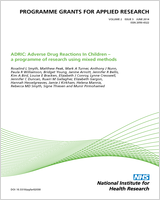From: Appendix 1, Systematic searches and summary of identified measures

NCBI Bookshelf. A service of the National Library of Medicine, National Institutes of Health.
Combined measures from reviews 1 and 2: operational measures
Call numbers and caller types:
Call management characteristics (numbers and proportions):
Utilisation (frequency of ambulance use):
Number of patients transported to hospital:
Proximity of services:
Proportion of calls treated by most appropriate service (whole 999 population).
Completeness and accuracy of patient records.
Frequency with which ambulance staff administer treatments (e.g. inserting breathing tubes, heart monitoring, oxygen therapy, defibrillation).
Service costs:
Ambulance service workforce characteristics:
Types and numbers of patient transportations:
Ambulance staff training:
Volume and nature of complaints.
Overtriage rates and undertriage rates:
STEMI, ST-elevation myocardial infarction.
From: Appendix 1, Systematic searches and summary of identified measures

NCBI Bookshelf. A service of the National Library of Medicine, National Institutes of Health.